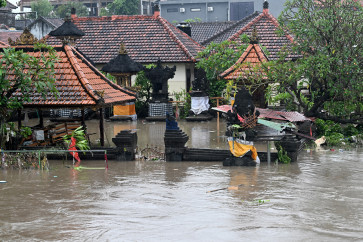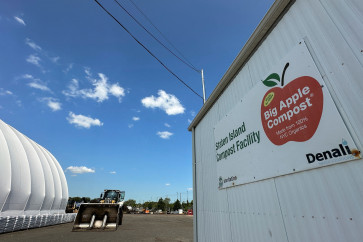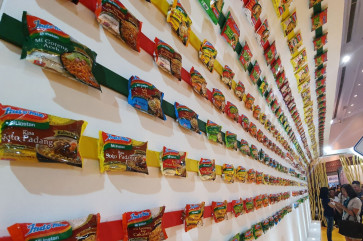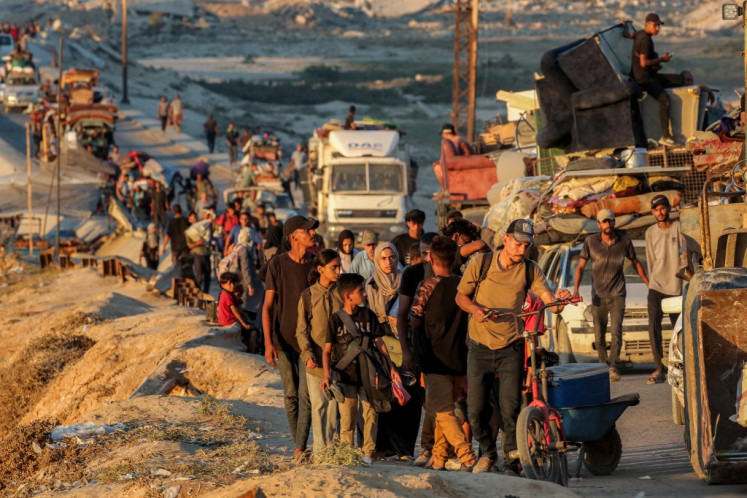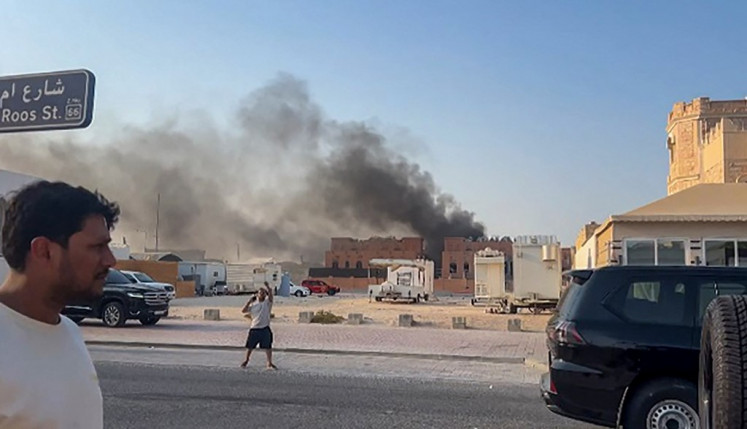Popular Reads
Top Results
Can't find what you're looking for?
View all search resultsPopular Reads
Top Results
Can't find what you're looking for?
View all search results‘Mudik’ becomes opportunity for economic recovery
It is pivotal for the government to manage mudik to optimize the intended economic growth.
Change text size
Gift Premium Articles
to Anyone
T
his year, the government has allowed people to mudik (exodus) and eased restrictions on celebrating Idul Fitri festivities – the first time in two years since the COVID-19 pandemic.
So far, we have seen some relatively high enthusiasm from the public, which has become an opportunity for economic growth, both national and regional. Therefore, it is important for the central and local administrations to make the necessary preparations in order to gain the economic advantages.
The Transportation Ministry has estimated that around 85.5 million people will travel to celebrate Lebaran this year, a significant increase of 40 percent from the pre-pandemic 2019 mudik period.
The main destination areas for Idul Fitri travelers are Central Java (23.5 million people), East Java (16.8 million people), West Java (14.7 million people) and Greater Jakarta (5.9 million people). Meanwhile, most travelers will depart from East Java (14.6 million travelers) and Greater Jakarta (14 million travelers). In regard to modes of transportation, most travelers will go by road (78 percent of total travelers), with 47 percent using private vehicles and 31 percent using public transportation. Meanwhile, some 10.4 percent of all travelers will go by air, 9.6 percent by train and 1.6 percent by sea.
We predict the increase will have a positive impact on national economic growth, especially in terms of boosting household spending. We estimate that household spending during Ramadan, Idul Fitri and mudik will be between Rp 77.6 trillion (US$5.3 billion) and Rp 116.5 trillion.
In business sectors, the mudik period may push transportation and storage, wholesale and retail, accommodation and food services, as well as tourism.
The exodus will also impact the regional economies.
The increased flow of people and money in destination areas will push regional economic activity. Travelers will shop, enjoy culinary experiences and visit tourist attractions. That being said, it is pivotal for the government to manage mudik to optimize the intended economic growth.
Connectivity and supporting facilities are keys to making sure that the exodus period will go smoothly.
Road traffic management should be the focus to avoid terrible congestion, considering that most travelers will go by road. Furthermore, road infrastructure should also be ready to support traffic management.
The Toll Road Regulatory Agency (BPJT) said it had prepared 2,500 kilometers of toll roads to support this year’s Idul Fitri exodus. They include 691 km of toll roads in Sumatra, 164.4 km of toll roads in Java, 10.1 km in Bali, 61.5 km in Sulawesi and 97.3 km in Kalimantan.
Toll roads projects that started operating earlier this year and are ready for the upcoming mudik are Binjai-Langsa section 1 (in operation since Feb. 4) and Cileunyi-Sumedang-Dawuan section 1 (operational since Jan. 24), the Jakarta-Cikampek extended toll road, as well as the Kutanegara-Sadang section.
Besides the availability of toll roads, we believe that the quality of toll roads, supporting facilities (rest areas and toll gates), as well as other services on toll roads also need improvements to accommodate the exodus.
Apart from monitoring the flow of mudik, local governments also need to expose small businesses to travelers.
The central and local governments must work closely with law enforcers to secure mudik routes and traffic management, which includes opening and closing rest areas and one-way and contra-flow routes, as well as monitoring over-dimension and overloaded (ODOL) trucks for logistics purposes.
Lastly, both central and local governments should anticipate the spread of COVID-19 after the mudik season. It is important to maintain strict health protocols prior to, during and after the exodus period to keep virus cases low.
In conclusion, this year’s mudik will certainly become an opportunity for our economic recovery. We estimate economic growth in the second quarter of the year to reach 5.01 percent year-on-year (yoy), with mudik as a positive catalyst and high-based effect (7.7 percent yoy in the same period last year).
According to our calculations, the impacts of this year’s Ramadan, Idul Fitri celebration and mudik on economic growth will reach 0.56 percent, with the assumption that 85.5 million people will participate in mudik.
But bear in mind that price hikes of fuel and several basic needs, including cooking oil, may also hamper the expected positive impacts of the Idul Fitri exodus.
--
Senior regional analyst at Bank Mandiri.


